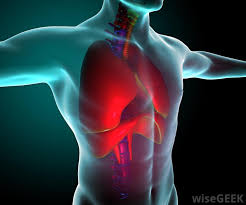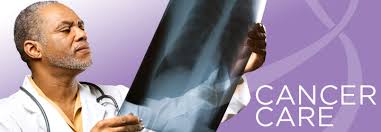Lung Specialist Biography
(Source google.com)
Pulmonology is the medical
specialty dealing with disease involving the respiratory tract. The term is
derived from the Latin word pulmō, pulmonis ("lung") and the Greek. Pulmonology is synonymous with pneumology, from the Greek ("lung") and -λογία, -logia, respirology and respiratory
medicine. Pulmonology is called chest medicine and respiratory medicine in some
countries and areas. Pulmonology is considered a branch of internal medicine,
and is related tointensive care medicine. Pulmonology often involves managing
patients who need life support and mechanical ventilation. Pulmonologists are
specially trained in diseases and conditions of the chest, particularly
pneumonia, asthma, tuberculosis, emphysema, and complicated chest infections.
In the United Kingdom , Ireland , South
Africa [dubious – discuss], and Australia the term
"respiratory physician" is used (rather than pulmonologist) to
distinguish a physician that practices pulmonology. In Canada ,
respirology and respirologist are used.
Surgery of the respiratory tract
is generally performed by specialists in cardiothoracic surgery (or thoracic
surgery), though minor procedures may be performed by pulmonologists. As
mentioned above, pulmonology is closely related to critical care medicine when
dealing with patients that require mechanical ventilation. As a result, many
pulmonologists are certified to practice critical care medicine in addition to
pulmonary medicine. There are fellowship programs that allow physicians to
become board certified in pulmonary and critical care medicine simultaneously. Interventional
pulmonology is a relatively new field within pulmonary medicine that deals with
the use of procedures such as bronchoscopy to treat several pulmonary diseases.
Interventional pulmonology is yet widely recognized as a specific medical specialty.
Medication is the most important
treatment of most diseases of pulmonology, either by inhalation
(bronchodilators and steroids) or in oral form (antibiotics, leukotriene
antagonists). A common example being the usage of inhalers in the treatment of
inflammatory lung conditions such as asthma or chronic obstructive pulmonary
disease. Oxygen therapy is often necessary in severe respiratory disease
(emphysema and pulmonary fibrosis). When this is insufficient, the patient
might require mechanical ventilation. Pulmonary rehabilitation has been defined
as multidimensional continuum of services directed to persons with pulmonary
disease and their families, usually by an interdisciplinary team of
specialists, with the goal of achieving and maintaining the individual's
maximum level of independence and functioning in the community. Pulmonary
rehabilitation is intended to educate the patient, the family, and improve the
overall quality of life and prognosis for the patient. Interventions can
include exercise, education, emotional support, oxygen, noninvasive mechanical
ventilation, optimization of airway secretion clearance, promoting compliance
with medical care to reduce numbers of exacerbations and hospitalizations, and
returning to work and/or a more active and emotionally satisfying life. These
goals are appropriate for any patients with diminished respiratory reserve
whether due to obstructive or intrinsic pulmonary diseases (oxygenation
impairment) or neuromuscular weakness (ventilatory impairment). A pulmonary
rehabilitation team may include a rehabilitation physician, a pulmonary
medicine specialist, and allied health professionals including a rehabilitation
nurse, a respiratory therapist, a physical therapist, an occupational
therapist, a psychologist, and a social worker among others.
In theUnited States , pulmonologists are
physicians who, after receiving a medical degree (MD or DO), complete residency
training in internal medicine, followed by at least two additional years of
subspeciality fellowship training in pulmonology. After satisfactorily
completing a fellowship in pulmonary medicine, the physician is permitted to
take the board certification examination in pulmonary medicine. After passing
this exam, the physician is then board certified as a pulmonologist. Most
pulmonologists complete three years of combined subspecialty fellowship
training in pulmonary medicine and critical care medicine.












In the
No comments:
Post a Comment